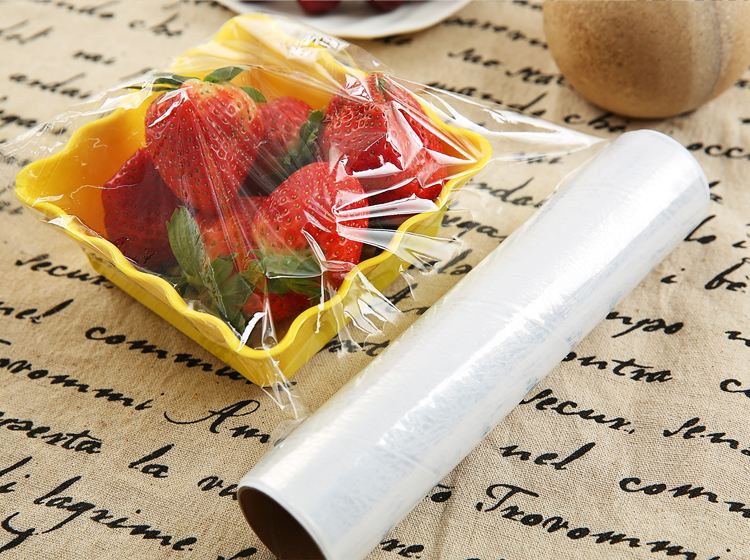(单词翻译:单击)
What makes kitchen plastic wrap cling so maddeningly to itself, and so conveniently to the sides of bowls and plates?
为何厨房的保鲜膜可以自我吸附,还能巧妙地贴合在碗盘上?
Plastic wrap clings for two reasons: it’s elastic and it’s sticky.
保鲜膜粘附主要有两个原因:弹性和粘性。
That probably seems pretty obvious, but let’s explore the chemistry beneath the elasticity and stickiness of plastic wrap.
虽然看起来很明显,不过我们还是来探究一下保鲜膜弹性和粘性下的化学原理吧。

Plastic wrap is elastic because of its molecular structure.
保鲜膜因其本身的分子结构而具有弹性。
A molecule of plastic is incredibly long and coiled up like a spring.
塑料的一个分子很长并且可以像弹簧一样蜷曲。
When you stretch out a piece of plastic wrap, you uncoil these long molecules.
当你将一块保鲜膜伸扯开时,同时也拉长了它的分子。
Like a spring, the stretched molecules tend to spring back, perhaps tucking under the rim of the bowl you just covered!
保鲜膜被拉伸后会像弹簧般收缩,也许就刚好贴合在碗的边缘。
Over time, certain types of plastic wrap lose some of their elasticity, which could explain why that dish you wrapped tightly may loosen up after a day or two.
随着时间推移,有些品种的保鲜膜会逐渐失去弹性。这也就解释了为何紧贴在碗边的保鲜膜会在一两天后松开。
译文为可可英语翻译,未经授权请勿转载!


